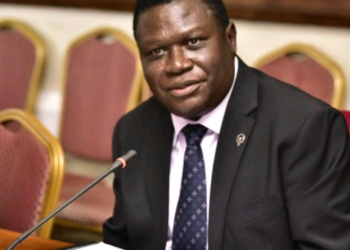I know that some readers of this article may think that the Karamoja scholar is confused. What is he trying to mean with “Karamojarisation of Karamoja for the Karimojong’s”? However, Iam not confused. Iam 95% sure of what Iam writing here. To clarify what I mean in this article, let me begin with Wabwire as cited in Knaute et al. (2009), who stated that “Karimojong’s have been frustrated by the dominance of experts of non-Karimojong origin, leaving many local people just sitting down, waiting for relief aid and external assistance.”
However, this is not the case today. Karimojong’s have taken over positions of power and authority in Karamoja. They are supervising government funded projects like Emyooga and PDM, heading technical departments in district local governments, bidding and winning large tenders, and even heading NGOs in Karamoja.
The question here is: why does Karamoja have poor development indicators when the local natives are at the frontline of service delivery? Without playing the blame game, this is the crux of the matter that we need to discuss and find a solution for in Karamoja. If an independent evaluator is to quantify how many billions of Ugandan shilling the Government of Uganda has been sending to Karamoja, along with the money from NGOs, anyone reading this would wonder and ask why the population of Karamoja, which is less than 1.5 million, remains poor.
I know there are people who are concerned about the ongoing poverty in Karamoja, such as the LCV chairperson in a district of South Karamoja who stated during a District Integrity Promotion Forum, “ You people, when we give you tenders, at least come and develop my district.” He went on to say, “Sometimes I give you tenders and then you run to Mombasa to enjoy life, only to come back empty handed.”
The implication of this is that tenders are indeed being given to the people of Karamoja. What I refer to as the “Karamojarisation of Karamoja” and the local Karimojong’s are benefiting as casual labourers. But again, the money is being spent outside of Karamoja instead of being re-invested back into the region. The argument here is that the administration of Karamoja is in the hands of the local natives of Karamoja, which I refer to as the
“Karamojarisation of Karamoja.” However, why is it that poverty, illiteracy, poor health services, and the practice of leaving children to care for livestock are dominant issues in Karamoja? Some may argue that these days, the Karamoja sub region is receiving fewer resources for service delivery from Kampala, something which needs to be verified. But my appeal to the people of Karamoja is to effectively utilise what we have to develop and change the image of Karamoja. No one will change the image of Karamoja unless the people of Karamoja do it themselves.
Ayub Mukisa (PhD)
Executive Director. Karamoja Anti Corruption Coalition
Email: ayubmukisa@gmail.com
Do you have a story in your community or an opinion to share with us: Email us at editorial@watchdoguganda.com













